

1
Read some of our great articles on a range of parenting topics from sleeping to teething. We publish new blog posts regularly and feature a number of baby sleep experts and their top tips
Filter by tag:
Tags...Jun 17 2021
Posted by: SnoozeShade HQ
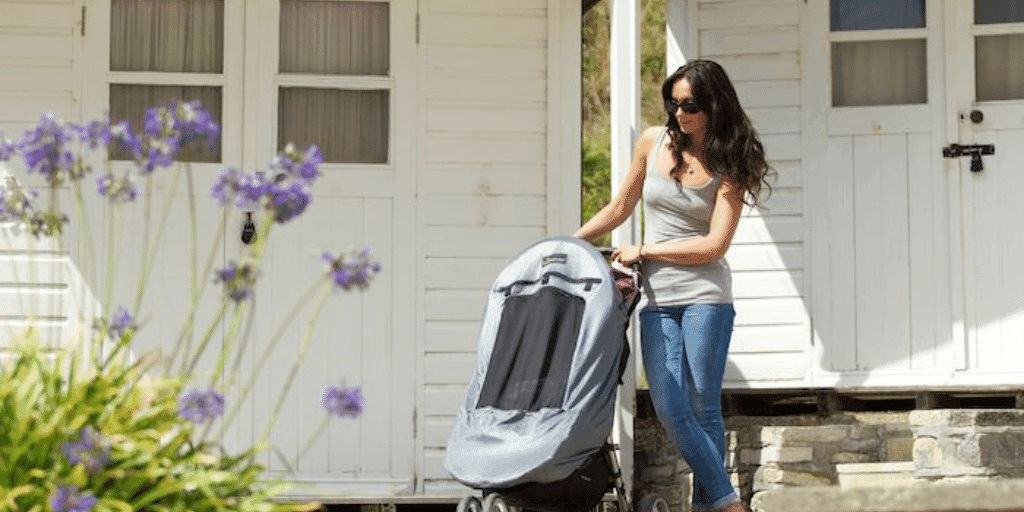
Do you have a baby who LOVES to nap in the car or on stroller rides? Cara Myre of Wee-sleep.com has some expert advice for you.
Naps on-to-go can be lovely as they provide you with more flexibility to take trips to the market, visit family and friends and other activities away from your home. However, keep in mind that very frequent motion naps can make your wee one’s sleep more difficult at bedtime and through the night. This can happen for a few reasons:
Sleep Surface – if your baby or toddler is used to the upright, more ‘cozy’ positioning of the car or stroller seat, they may rebel when it is time to sleep on the firm, flat surface of their crib or bed. This can lead to trouble setting at bedtime or throughout the night!
Sleep Drive – the relaxing vibration of cars and strollers can accidentally lull your child to sleep even before they are due for a nap, or GASP, you end up with only a 5-10 minute nap! This can wreak havoc with their internal sleep pressure, which builds throughout the course of the day to allow for a full night of rest. Your little one may be quite overtired by the time bedtime comes, and we know overtired children are more prone to night wakes then well-rested ones on a proper schedule.
So how do you balance naps on the go AND proper rest? Here are some tips:
Still have questions or concerns about sleep? Cara Myre is a Senior Sleep Consultant with WeeSleep who helps tired families across the globe. Visit www.wee-sleep.com to book your free 15 minute phone consultation and follow her on Instagram for regular tips on sleep.
May 18 2021
Posted by: SnoozeShade HQ

If this is you, read on for some answers!
Once you get over the age of one year, your little one should be sleeping around 10-11 hours at night and will either be down to one nap a day, or still sometimes need two. If she is having just the one nap in the daytime, it should be around two hours though each child differs.
It’s still important to keep to a good bedtime routine as much as possible and have a consistent wind-down routine, bath, story and bed. Keep looking for your baby’s sleep cues and offer their usual comforting items and action, such as a repetitive bedtime story, being popped into a sleeping sack and having some gentle music, white noise or womb sounds.
Now that your little one can get up to so much more physically, try to have a good daytime routine too. You may find that after breakfast, you could play some games together, followed by a little quieter time in their playpen while you get on with a few things. Head out to the garden or park, or to an indoor play place if the weather’s bad, for some physical activity to release all that energy they seem to have. Then it’s lunch, followed by a nap.
Afternoons can be a repeat of the above, or you might visit friends or have playdates with some other babies of the same age. Consistency keeps your little one feeling safe and secure and a good routine helps them know what to expect – too much change can be unsettling for your child. Of course, the odd change from routine is not a problem and nor is a family event such as a holiday.
Now that your little one is getting so much bigger, you’ll find that she has definite likes and dislike and will want to choose some things for herself. Now’s a good time to start to allow your child some choice in what is going on in their everyday life. This can be particularly helpful at bedtime, as even babies who struggle to settle down may be easier to calm if they feel that they are in charge – at least a little bit!
Give your baby no more than two or three choices, otherwise you could end up having more problems than you started with. So, have two favourite books ready and perhaps two pairs of pyjamas or sleeping bags and allow your little one to choose which they would prefer. Don’t ask questions to which your child could just say “no” – so instead of “do you want to have a bath?” try “do you want a bath or a story before bed?”
Make sure that all the steps you take area leading towards bedtime and now that your child has a better understanding of language, you can say “it’s time for. Story before you go to sleep” or “how about this story before you snuggle down in your cot?” Giving your child warning of what’s to come I also a great idea and something they are now able to understand. So “now you’re going to have a lovely bubble bath before we read a story and go to sleep.”

If they have not done so before, your child may try to climb out of the crib at night and some even manage to do it! Make sure there’s nothing in the crib to climb up on and keep the crib far away from things like curtains and blind cords that could be a hazard. Make sure the mattress is at its lowest level. If your child has managed to get out, place some cushions on the floor to break a fall. Though it’s early to be considering a toddler bed, you might want to as they allow your child to get in and out of bed by themselves – but make sure the room is baby-proofed first and that there are stairgates at the top of the stairs or any drops. Don’t make a huge fuss about it – the last thing you want is for your toddler to realise they can get a reaction, as then she’ll keep doing it! Be firm and calm, tell her she must not climb out and put her back in.
Between the ages of 18 and 24 months, your little one may have another sleep regression and this can be quite difficult to manage. Like the four-month regression, it’s due to physical and mental changes happening inside your child’s body and there can be several reasons:
How to cope: You now have to introduce an element of discipline when your child starts to do something that’s not helpful in the long term. So saying “no” calmly and firmly when they display bad behaviour, not allowing yourself to be stressed and knowing that this phase will pass, all helps.
Further Reading:
Understanding Your Baby’s Sleep From Newborn to 3 Months
Understanding Your Baby’s Sleep From 12-18 Months
Baby Sleep Patterns Between 3 and 6 Months
May 17 2021
Posted by: SnoozeShade HQ

Sleep regression is a dreaded stage when your baby’s (hopefully) good sleep patterns suddenly get worse for a short period of time. You can read more about what sleep regression is here.
Your baby may experience several periods of sleep regression in their first two years. It can hit at four, eight and twelve months, at 18 months and again at two years. Remember that all babies are different and that these times scales are just a guide.
One of the worst sleep regressions, the four-month regression comes at a time when major changes are happening to your baby, including some big physical changes. It usually lasts for around five weeks and you’ll find that your baby is fussy and harder to get to sleep.
You may have just got to grips with a sleep routine and this will disrupt it. Many baby sleep experts advise you to do whatever you need to do to survive, which may mean reverting to rocking your baby to sleep when you’d managed to stop this. White noise can also be a great way to soothe a fussy baby.
Do not cut down on daytime naps in the hope that your baby will sleep through the night. At four months, your baby should get between 12 and 15 hours of sleep a day. If napping out and about is part of your routine, use SnoozeShade to give your baby a dark environment with no distractions.
There are a couple of big changes that cause the eight-month sleep regression. For one thing, your baby is now much more active, rolling over, crawling and maybe even pulling themselves up and cruising around the furniture and this activity can cause problems at bedtime if they want to stand up in the cot or roll around it. The other big change is in their emotional development, when they become aware that you sometimes leave the room, or leave them with a childminder or at nursery. Welcome to separation anxiety! Your baby doesn’t yet understand that if you go away, you will come back again, so they need to learn this. Play fun games like Peek a Boo and talk to them as you leave a room, so that they can still hear you. It can also be helpful for your baby to see you if they wake during the night, to reassure them that you’re still there – keep your actions to a gentle pat and a few words, resisting the temptation to pick your baby up. You might even be able to soothe them by using the talk back function on a baby monitor to avoid unnecessary disturbance.

Being a year old is an exciting time and now your little one has started to walk and talk, it’s no wonder they don’t want to waste time on sleep. The 12-month regression generally lasts for about two weeks. Luckily, your baby’s new physical skills mean that you can do lots of physical activity to really tire them out. Perhaps you could also drop to one nap a day, aiming for a total of between 11-14 hours of sleep in a 24-hour period. During this regression, and in future ones it’s best to avoid picking up your baby to rock them to sleep, as at this age it really won’t help to develop their independence and ability to self-settle.
The 18-month regression will often be linked to new teeth (your baby’s canines will be appearing around now), as well as separation anxiety and increased cognitive development. As their second year approaches, your little one may also be having tantrums – they become frustrated at things they can’t yet do. To get through this, stick to your bedtime routine and try not to offer extra naps in the daytime to make up for lack of sleep in the night. You can also start to offer them the opportunity to get involved in decisions, so they feel like they have some control – allow them to choose between two different outfits, or pick the book to read at bedtime.
By now, your little one is a real person with lots going on in their young lives – moving from a cot to a bed, potty training, nursery and play groups. Add to this that their molar teeth are erupting, they are still having tantrums and you’ve got some pretty big issues to contend with. This sleep regression can last from two to six weeks but you’ll be able to deal with this one better and hopefully, it’s that last one you’ll have to contend with.
We hope you’re feeling better about getting through phases of broken sleep, disturbed nights and frustration. Just remember, they don’t last forever and it will soon be a memory!
Further Reading:
5 Top Tips to Deal with Sleep Regression
What You Need to Know About the Two-Year Sleep Regression
Three Baby Sleep Problems and How to Fix Them
Apr 21 2021
Posted by: SnoozeShade HQ
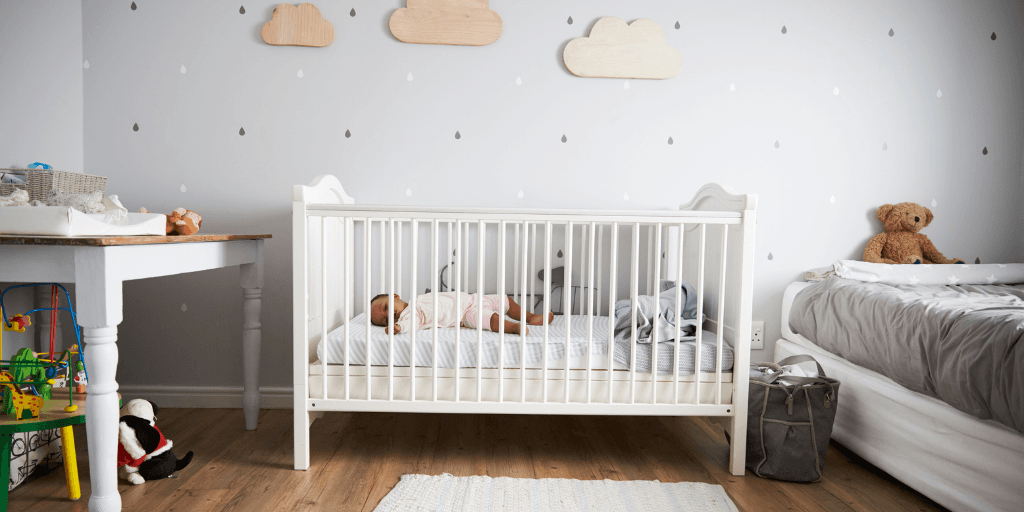
Here you will read all about;
Your little one had grown and changed so much in the last year. From a helpless baby who can’t move much, to a robust toddler who’s getting around all on his own, there has been an incredible amount of development in those 12 short months.
Your child looks and seems far more independent than they were just a short time ago – but they still have the needs of a baby in many ways. Sleep is one of the most important needs that he still has and you will need to make sure that he gets all the sleep he still needs at this crucial age.
Between 12 and 18 months, he will need about 13 or 14 hours of sleep per day. This breaks down to around 11 hours at night and the rest as naps during the day.
During the early part of this six-month period, he will probably still need two naps a day but towards the end of this time, you can start making the transition to just one nap per day of about one and a half to two hours.
The most important thing to consider at this point is what will suit both you and your toddler. If you have things you usually do in the morning, for example baby singing classes, meeting up with friends and so on, a nap just after lunch might be the best option for your new routine. Keeping busy and active in the mornings will also help your little one sleep, as little muscles will be tired. Some babies will make the transition quite quickly, while others will take longer. See what works best for your little one. If your little one is a very early riser, a pre-lunch nap might work better.
Don’t be worried if, on some days, your baby still wants a couple of naps. This might be due to a growth spurt or perhaps they might be feeling a little under the weather.

Even when changing daytime sleep habits, you should try to make sure that your baby has some really good quality sleep at night and this means sticking to your usual night time sleep routine. If your bedtime routine has been a little erratic up until now, try to make sure that you stick to it as much as possible and make it a special time between you and your baby. It helps your little one feel safe and secure. As he is more mobile, he may need some time to work off excess energy before bed, so maybe have some fun and game, in the garden or park if the weather’s good. Then after supper, it’s time to relax, reduce stimulation and wind down.
Try to avoid using the television, computers or tablets in the evening, as this may stimulate your baby so that he’s too wired to sleep. It also uses blue light, which stimulates the brain to be more awake.
The major reason your little one might find it difficult to wind down and get to sleep at this age is all those new skills he’s learning. Crawling, cruising and walking are all new skills that your baby wants to practice and show off and this may carry on to the time when he’s supposed to getting ready for bed.
Sometimes if your baby wakes in the night, he may want to get up and walk around in the cot. Make sure the mattress base is now at its lowest setting, as that the cot is clear of any toys, cushions or bumpers that might be used to climb on.
Your little one may also start to wake earlier in the morning; don’t be tempted to change his usual bedtime though, as this may backfire and result in a disturbed sleep during the night. Which leads onto the next point.
Sometimes even the best sleeper starts to have some problems with their sleep. There are several reasons why this might be the case;
Most of these will resolve themselves and sleep patterns will revert to normal. However, one event may be more difficult to resolve. As they approach two years, some children start to have nightmares. It’s not known why this happens at this time, but you may find that a previously contented toddler suddenly has terrifying dreams and wake screaming or appears unsettled in the morning. Try to offer extra comfort if this seems to be the case
Further Reading:
Toddler Nap Problems and Their Solutions
Baby Sleep Patterns Between 3-6 Months
A Month by Month Guide to Sleep Regression
Feb 08 2021
Posted by: SnoozeShade HQ

You might be thinking about;
Before your baby gets to six months, their movement is limited and they have been spending quite a lot of their days and nights asleep. See our month-by-month nap guide to how much sleep your little one should be getting.
Now, however, they are starting to get a lot more mobile! If they’re not crawling yet, they are certainly on their way towards it. They may be sitting up well, bum-shuffling, cruising around the furniture, rocking on all fours, rolling over and pushing their head and arms up when you give them their Tummy Time. Toys are there to be built up and knocked down or batted at.
How does this affect their sleep? You’d think that all that extra activity would tire them out – and to some extent, it does and helps them make the transition towards sleeping more at night and less in the day.
However, if they have enjoyed all that extra activity, they may start to try it out when they are supposed to be sleeping! There’s an actual moment when your baby discovers “up” – that there are things above the to be looked at and reached for. Once they have discovered this there’s no turning back.
Of course, this means that they will try to crawl, stand and cruise in the cot and then it can be really hard to get them to sleep.
Watch for your baby’s sleep cues – you should be used to most of them by now. They might rub their eyes, pull at the ears, yawn, be grumpier than before and lose interest in a game you’re playing or a toy they have been enjoying.
Remember that gap you have between baby being tired enough to settle easily and the point when they have become overtired. Try to ensure that you go through your sleep or nap routine when you recognise this, or if you’re out, put them in their stroller and pull down the hood and pop on your SnoozeShade to reduce stimulation – they need to be in a calm, quite environment.
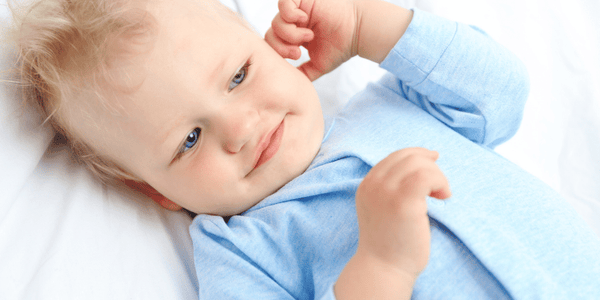
Six to Nine Months – Your baby needs three hours of sleep during the day, 11 hours at night.
Nine to Twelve Months – At this age, your baby should still be having two good naps a day. They now need two and a half hours of sleep during the day, 11 hours at night.
Try to make sure that one nap is at home in their cot. It’s fine for the other to be when you’re out with the car or with the stroller. Don’t worry too much if you have days when they are going out to activities and baby classes and they sleep on the way back! If your little one is at Nursery, make sure you speak to the staff about when they are put down for a nap and try to ask for their routine to mimic yours. Take their sleep props and comforters in with them, such as their sleeping bag and a comforter.
When your baby approaches their first year, they have another developmental leap – they will want to start walking. All babies are different, so don’t worry if your baby gets to this stage earlier or later than their little pals. At this stage they may once again struggle to sleep, as they will want to move about in their cots which offers the perfect supports for those wobbly little steps.
You may wish to leave them to have a little play like this between their bath and starting the last part of their bedtime routine. Try to help them lie down by themselves rather than always putting them down – otherwise they will always want you to do this! This phase will pass as soon as the novelty wears off.
Further Reading:
Understanding How Your Baby Sleeps (Newborn to 3 Months)
Understanding How Your Baby Sleeps (12-18 Months)
Understanding How Your Baby Sleeps (18 Months+)
Dec 15 2020
Posted by: SnoozeShade HQ
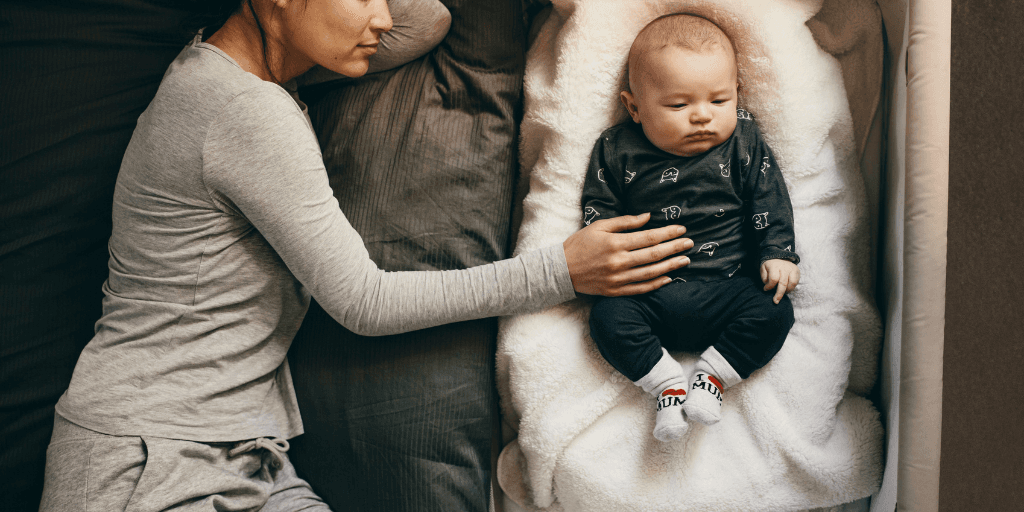
One of the things parents often worry about when taking a trip with their baby is whether the baby’s sleep will be affected by sleeping somewhere new.
To tackle the tricky conundrum of managing to get your baby to sleep well in a strange environment, we’ve asked Emma, baby sleep consultant and founder of Perfect Little Sleepers to give us some of her professional tips. Over to you Emma!
“These are my top four tips to help you keep your baby’s nap and sleep routine on track when you’re staying away from home – whether that is with family or on vacation.
You can find Emma on Instagram where she shares lots more helpful info on baby’s sleep, as well as offering one to one assistance to sleep-deprived parents.
Further Reading:
Travel Hacks for Busy Parents
What Should My Baby Wear in Bed?
Best Baby Sleeping Sacks
Sep 23 2020
Posted by: SnoozeShade HQ

The clocks changing twice a year can mess with us in more ways than one, not only getting used to lighter or darker mornings, evenings and gloomier days but also in terms of sleep! There are a few methods on how to deal with the clocks going backwards when you have to factor in a baby who sleeps to a set routine.
Here are a few thoughts, methods and ways to manage it from some of our favourite baby sleep practitioners – and their advice may surprise you.
“Clock changes can impact your baby’s routine which immediately worries parents. My simple hack is to start moving your little ones routine by 10 minutes each day from Tuesday before the change – this includes bedtime, nap times and meal times. By the time the ‘Clock Change’ day rolls around your baby will have already adjusted to their new routine.” Jade at www.123babysleep.com

“You could also try the Split the Difference approach” advises Liz at The Sleep Nanny, “which means just that- take the extra hour and split it in half. This means putting your little one to bed half an hour later than the usual bedtime. It may mean he wakes a little early (by the new clock time) but that will soon iron itself out when you return to a 7pm bedtime on Sunday.
Or my recommended approach, Cold Turkey; Immediately switch to the new time, and save a week’s worth of confusing bedtime routines. For example, if your child’s bedtime is normally 7pm, on Saturday night try to keep your child up for an extra hour and, for one night only, give them an 8pm bedtime.“
Another sleep professional, Kerry at CareItOut.com has the same advice:
“Do absolutely nothing and yep that’s not a typo! It’s only one hour and honestly most Small’s will adjust all by themselves without you doing anything within a day or two.
If you do want to prep ahead, 4 days before start putting them down for their naps AND bedtime 10/15 minutes later each day. When Sunday is here your routine will be an hour ahead in prep for the clock change. IF after the clock change they start to wake earlier slowly move their naps and bedtime forward by 10/15 minutes every day until they’re waking at a civilised hour. Try and stick to your usual bedtime routine as consistently as you can.“
So there you have it, a gradual daily change or cold turkey – which camp do you sit in? Don’t forget that a SnoozeShade will give your baby a nice safe and dark place for naps when on the go to help keep that sleep routine going!
Further Reading:
How to Handle Baby Sleep When Clocks Go Back
How to Help Your Child Handle the Clock Change
4 Tips to Adjust Your Baby’s Sleep When the Clocks Go Forward
Sep 23 2020
Posted by: SnoozeShade HQ

You think you’ve got your baby’s sleep cracked and then along comes a heat wave and everything goes to pot! Well to stop this from happening and help everyone get more sleep in hot weather we approached some of our trusted baby sleep experts to give you their insider tips and knowledge and help you know what’s normal behaviour and what you can do to secure a good night’s sleep.
“Create a dark sleep space and cool room (18-21) and make sure a light and breathable sleep sac is worn with just a little onesie underneath. We love Aden and Anais muslin!” – Janey at wee-sleep.com
“Here’s a fun fact for you: all of us (little ones and adults alike) tend to sleep more deeply when the temperature is cool. The optimum temperature for sleep will vary from person to person, of course, but a good temperature to aim for is right around 68 degree Fahrenheit (20 degrees Celsius). It can be hard to keep room temperatures that cool in the summer, but as fall temps cool off, you may find that your baby begins to sleep more deeply and soundly.” – Nicole at Baby Sleep Site
“Babies are unable to regulate their own temperature and so it’s really important we monitor this for them. Follow safe sleep guidelines and avoid hats, remove socks and if possible, use bamboo or full cotton clothing for breathable fabrics for sleeping in. Breastfed babies will need to feed more in high heat, and bottle-fed babies may need a drop of water every now and then between full feeds. If your baby is needing cuddles but is finding it too hot to be in arms, lay down next to them on a flat firm surface, face to face and gently rub their back, This should allow them the closeness they need to settle, whilst allowing air to flow between you. Allow their breathing to become calmer, deeper and more settled, indicating a deeper sleep before gently scooping them into their safe sleep space. If little one is in just a nappy and prefers to cuddle upright into your chest as they nod off, place a muslin between you to avoid becoming hot and sticky.” – Fern at The Big Sleep Co
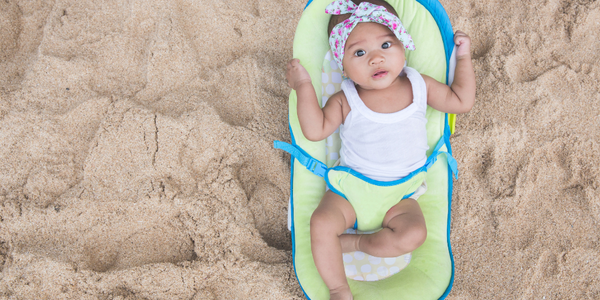
“My biggest piece of advice for helping a baby sleep in hot weather is to dress them in nothing but a diaper and possibly a thin sleep sack. Room darkening shades are also a must to keep out the hot sun! And of course, if you’re napping your baby on the go in hot weather, your SnoozeShade will be a lifesaver” – Eva at My Sleeping Baby
“Babies in the 0-6 month age range will likely still need a layer of clothing on when they’re sleeping. A thin, breathable onesie or sleep sack should do the trick. Running a fan will help keep your baby cool and has the added benefit of providing some white noise. Make sure baby is well hydrated. A decrease in tears, wet diapers, and a dry mouth are all signs of dehydration.” – Dana at Sleepsense
“Lastly some more general tips that will help us all to sleep better during a heatwave:
Hopefully the advice we’ve compiled on helping your baby to sleep better during hot weather have been helpful, but we would love to know if you have any more suggestions!
Further Reading:
Travelling with Kids: Don’t Leave Home Without these Essentials
Newborn Baby Travel Checklist
Help Your Baby Sleep Well on Holiday
Sep 23 2020
Posted by: SnoozeShade HQ
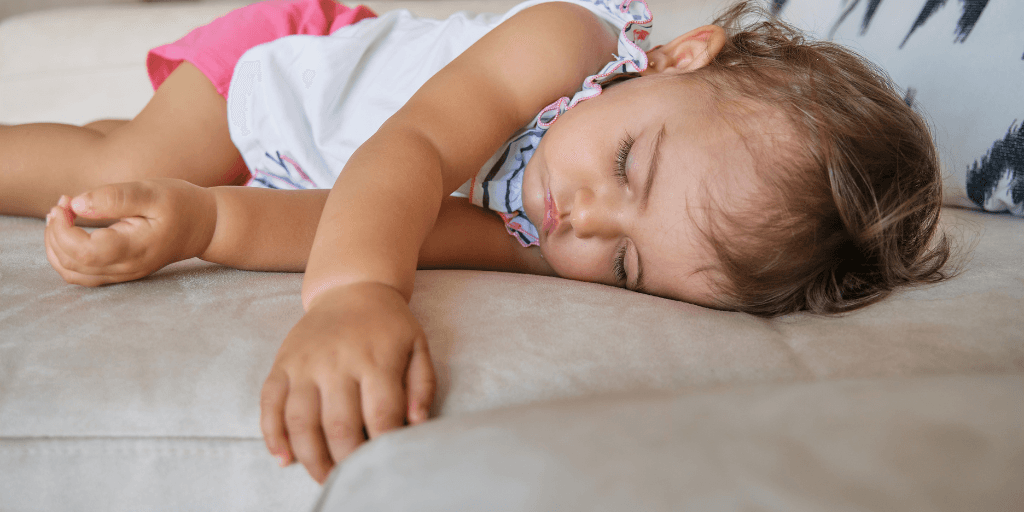
You think you’ve got your child’s sleep cracked and then along comes a heat wave and everything goes to pot! Well to stop this from happening and help everyone get more sleep in hot weather we approached some of our trusted infant sleep experts to give you their insider tips and knowledge and give you the lowdown on how to help your toddler sleep better in hot weather!
“The ideal room temperature is between 65 and 70 degrees Fahrenheit (or 18.3 to 21.1 Celsius), but I recommend you use these numbers as a starting point. In my experience of over 10 years, the ideal temperature for your family will vary a little, depending on you (and your toddler) and how many blankets/coverings you use. Keep in mind that your child won’t learn to keep a cover on all night until over 18-24 months.” – Nicole at Baby Sleep Site
“Melatonin, our sleep hormone, is released in response to dim light- so if you’ve completed a lovely calming bedtime routine following adequate wind down time, but your little one is really struggling to nod off and it’s peak summer, it’s likely to be the hot weather causing havoc. Whilst hot, stuffy rooms are never enjoyable or easy to achieve sleep in, Melatonin surge is also linked to a drop in core temperature. If your child is overheating or struggling to cool off, it’s going to not only disturb their night but really impact their initial ability to fall asleep. Try a cool bath, cotton bed clothing and keep doors and windows open for good airflow.” – Fern at The Big Sleep Co
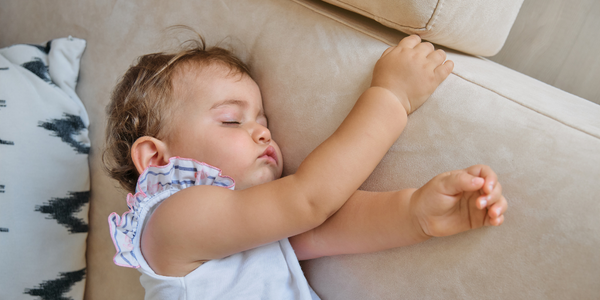
“A thin cotton or bamboo sheet can help absorb sweat and draw heat away from the body, and will actually keep your child cooler than sleeping in just a diaper. Avoid memory foam mattresses and pillows as they retain body heat and don’t allow for good airflow. A fan is always helpful, and a metal bowl of ice placed behind it can help lower the room temperature by a couple of degrees. Proper hydration is also essential for a good night’s sleep.” – Dana at Sleepsense
“My biggest piece of advice for helping a toddler sleep in hot weather is to dress them in nothing but a diaper and possibly a thin sleep sack. Room darkening shades are also a must to keep out the hot sun! And of course, if you’re napping your little one on the go in hot weather, your SnoozeShade will be a lifesaver” – Eva at My Sleeping Baby
“Over the last 9 years I have worked with thousands of families and keeping the bedroom cool is one of the easiest things a parent can do that can really help their child sleep better. We all sleep best in cool bedrooms. I remember once working with a young child who was waking up very upset every night and one of the biggest changes we made was making sure he was comfortable and cool each night. The cool bedroom and a couple of other changes resulted in this child sleeping through the night.” – Shannon at Sleep Well
Hopefully you have some more tools in your sleep-inducing toolkit now and can help encourage peaceful slumbers for your toddler when it’s hot. Let us know if you have any other suggestions to try too!
Further Reading:
Tips for Helping Baby Sleep in Hot Weather
Child Friendly Vacations: Where to Go For The Best Family Break
Tips for Your First Family Vacation Over Seas
Sep 23 2020
Posted by: SnoozeShade HQ
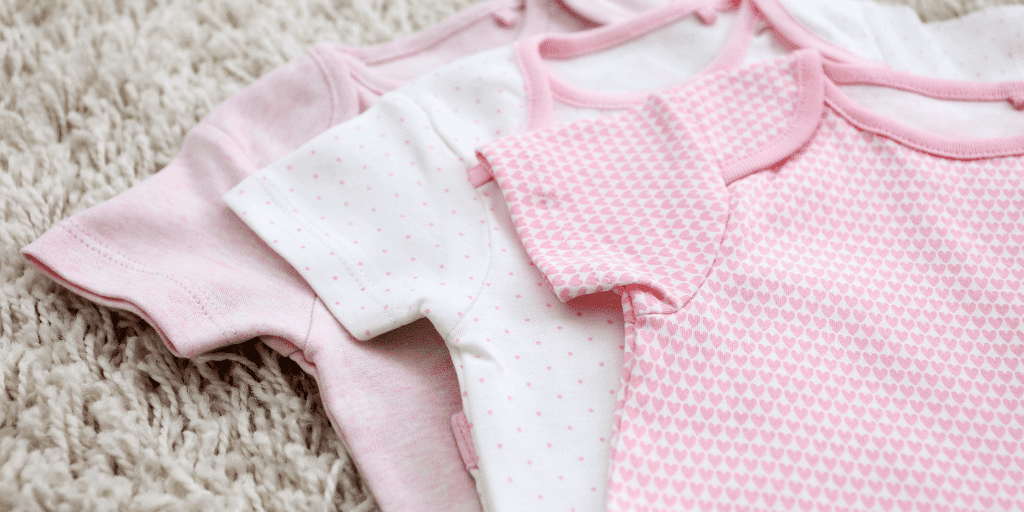
If your little one is not sleeping well, then read our article on tips to help your baby sleep through the night for some handy advice.
One of the first things you need to check is the temperature in the nursery (or your own bedroom when your baby is still sleeping in your room).
The ideal room temperature for babies is between 16-210C (60-690F). To keep an eye on this, use a product such as the Gro Egg, a nursery thermometer or a baby monitor that shows live temperature readings.
We turned to some expert infant sleep practitioners for their advice on what your baby should wear to bed.

Liz at Sleep Nanny
“From a safety perspective, it’s really important to carefully consider what your little one wears to bed. I highly recommend getting a good quality Sleeping Bag. They are really great for helping parents feel confident that their little one is at the correct temperature at night and it keeps little ones cosy in a similar way to swaddling. Sleeping Bags come in different sizes according to your baby’s age and they ensure that loose covers are not a problem. They come in a variety of tog ratings (their warmth level) so you can select the one that is most appropriate for the time of year. Many also come with a guide that provides full information on what your baby should be wearing inside the Sleeping Bag. As a general rule, your baby’s bedroom should be between 16 and 200 C (61 to 680 F).“
Nicole at Baby Sleep Site
“For newborns who are swaddled, I recommend they wear a vest underneath a light babygrow (long-sleeved in the winter and short-sleeved in the summer). In the summer, you can probably skip an outfit with feet or socks but in the winter, you may want to keep them on.“
Fern at TheBigSleep Co
“The Lullaby Trust suggests that a safe nursery should be around 16 to 200C. Maintaining a room’s temperature can be tricky, and if the temperature drops in the early hours, it can cause disturbances. Feel your baby’s chest or back (not their hands which are often cooler) to check for sweaty or clammy skin when deciding whether to add or remove layers. Bamboo or cotton bedclothes are best for sleeping (avoid velour for example). Swaddles or Sleeping Bags have a tog rating, so they can be easier to adjust to the season or weather flukes, rather than blankets that, when folded, may inadvertently overheat your baby and present suffocation risks for wriggly infants. A baby who is too warm may achieve deeper, longer stretches of sleep that would not have been naturally achieved without the warmth, thus raising the risk for SIDS.“
Eva at My Sleeping Baby
“Your little one’s sleep attire should vary depending on the temperature. If the room is on the cooler side, such as 20-210C, I recommend dressing the baby in a long-sleeved babygrow with a thick 2.5 tog Sleeping Bag. If the room is on the warmer side, around 23-240C, a long-sleeved babygrow with a thinner 1-1.5 tog Sleeping Bag would be more appropriate.“
Dana at Sleepsense.net
“All humans prefer to be on the cooler side rather than being too warm when we sleep, yet most parents tend to over-dress their babies for sleep. One-piece pyjamas or a babygrow are the best because they will not ride up or get bunched up, making the baby uncomfortable. I also suggest a lightweight Sleeping Bag over pyjamas.“

Hopefully these tips will help you decide what your baby should wear for sleeping at night and for naps.
If you’re using a Pack ‘n’ Play for daytime or holiday naps, don’t forget that SnoozeShade’s air-permeable fabric means that the temperature remains the same inside the crib as it does in the rest of the room with the SnoozeShade for Pack ‘n’ Play
Further Reading:
Seven Expert Tips to Help Your Baby Sleep Well
Top 10 Baby Sleep Myths Busted
Tips for a Perfect Baby Shower


© 2025- SnoozeShade | All rights reserved